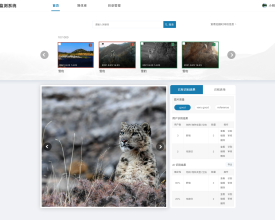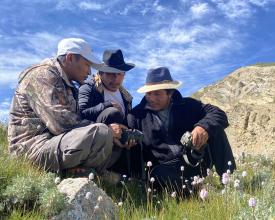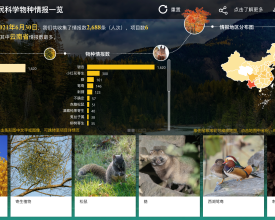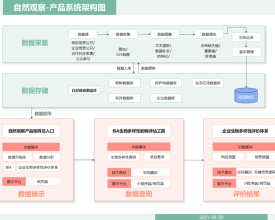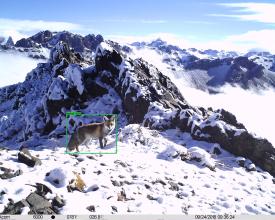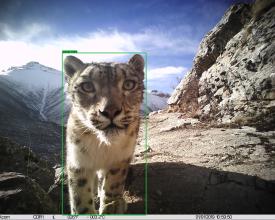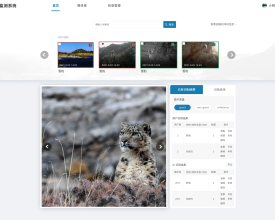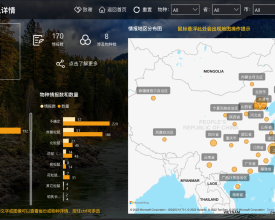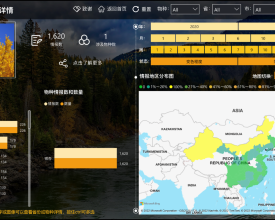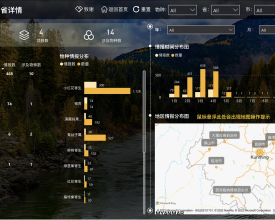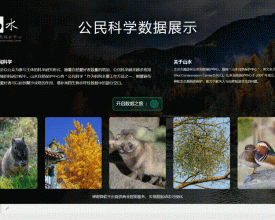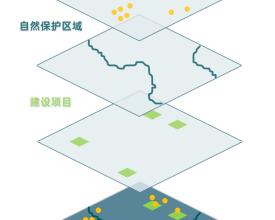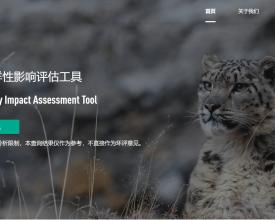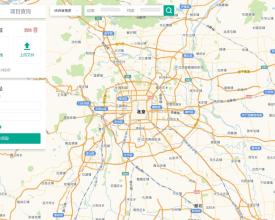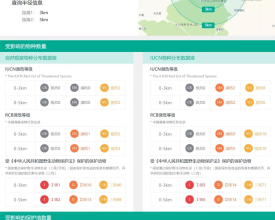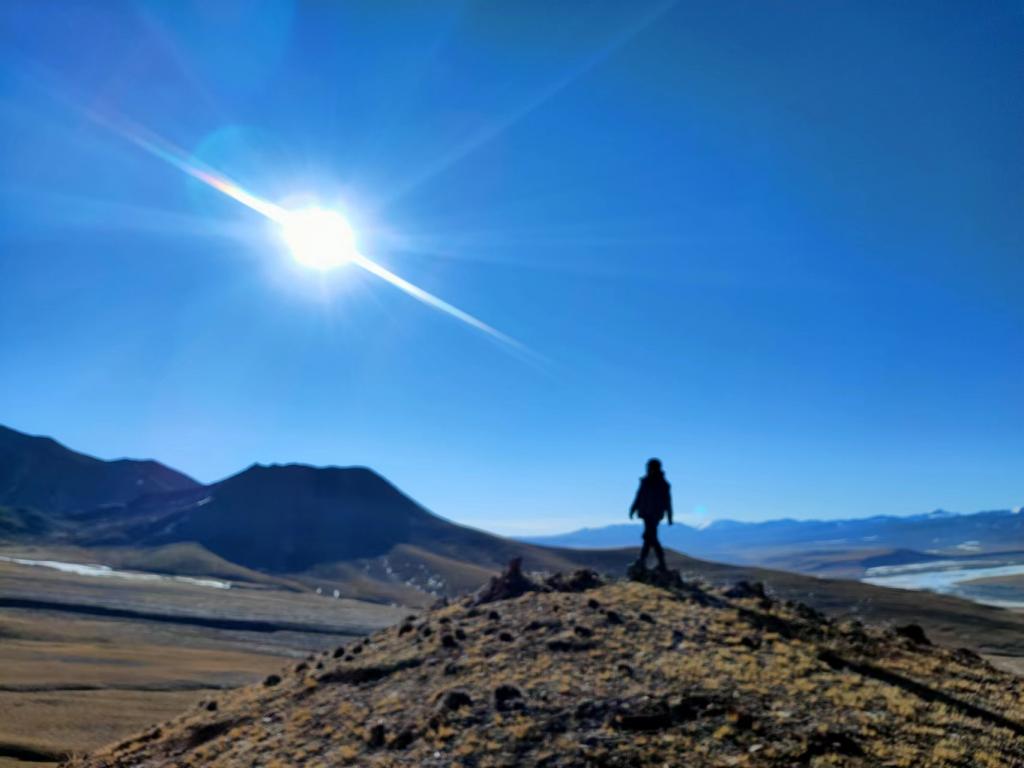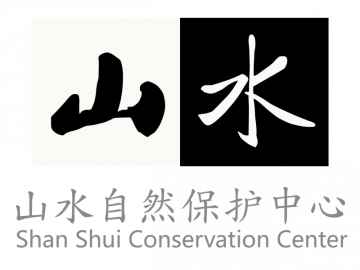
China Nature Watch : utilisation de la technologie pour la collecte et l'application d'informations sur la biodiversité afin de faciliter la prise de décisions respectueuses de la biodiversité
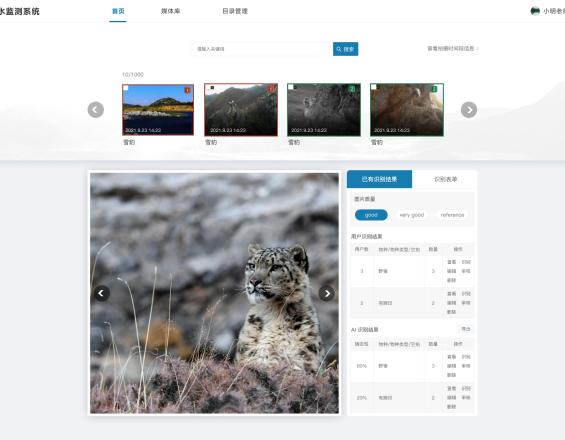
Les données de référence sur la biodiversité sont essentielles à la prise de décision et aux pratiques de conservation, mais elles sont confrontées à un manque de données et à une asymétrie de l'information. Avec l'aide d'outils technologiques, China Nature Watch vise à renforcer la collecte de données sur la biodiversité à partir de diverses sources, en particulier la science citoyenne, à faciliter les applications des données dans l'aménagement du territoire et la participation du public, et à intégrer la conservation de la biodiversité.
Plus précisément, la technologie apporte des solutions efficaces à trois modules :
- Gestion des données des pièges photographiques : développement d'un système de gestion des données en ligne intégré à l'IA pour simplifier et accélérer la collecte et le traitement des données des pièges photographiques.
- Visualisation des données de la science citoyenne : utilisation de PowerBI pour analyser automatiquement et visualiser de manière interactive les données sur les espèces collectées par les scientifiques citoyens.
- Outil d'évaluation de l'impact sur la biodiversité (BiA) : intégration de données écologiques et de construction provenant de sources de données multiples afin de fournir une demande instantanée d'évaluation de l'impact sur la biodiversité pour les projets de construction via une plateforme en nuage.
Contexte
Défis à relever
Chaque processus du flux de données sur la biodiversité, de la collecte à l'application en passant par le traitement et la visualisation, est lourd et fastidieux, exigeant beaucoup de travail répétitif et nécessitant d'urgence une simplification et une automatisation.
- Gestion des données des pièges photographiques : la surveillance communautaire des pièges photographiques est confrontée à des goulets d'étranglement liés à une faible efficacité (par exemple, la collecte de données par les observateurs locaux, l'identification manuelle des espèces) et à une qualité instable et relativement faible des données (par exemple, des données incorrectes et manquantes, des taux élevés de photos vierges).
- Visualisation des données de la science citoyenne : les produits de visualisation sont statiques et spécifiques à la campagne, créés manuellement à plusieurs étapes de chaque campagne, ce qui coûte beaucoup d'efforts aux défenseurs de l'environnement tout en ne fournissant qu'un retour d'information tardif aux scientifiques citoyens.
- Évaluation de l'impact sur la biodiversité : le manque de données et l'absence d'accès public aux données ont limité les scénarios d'utilisation des données. En outre, l'évaluation de l'impact sur la biodiversité est réalisée manuellement pour chaque enquête, et les rapports sont rédigés à la main.
Emplacement
Traiter
Résumé du processus
La planification globale et le développement d'un partenariat de soutien ont fourni une base concrète au projet.
Les données des pièges photographiques constituent une source intégrale de données sur la répartition des espèces pour la base de données Nature Watch. Le système de gestion des données des pièges photographiques permet d'accélérer le flux de travail global et d'améliorer la saisie en temps voulu des données des pièges photographiques dans la base de données. De même pour les données des scientifiques citoyens, qui constituent une autre source de données sur les espèces, la plateforme de visualisation contribue à susciter l'enthousiasme des scientifiques citoyens et à stimuler les observations d'espèces. Ces deux éléments accumulent des données pour l'outil BiA, ce qui favorise une évaluation plus précise.
En outre, la plateforme de visualisation et l'outil BiA impliquent une communication publique ciblant différents publics, se complétant l'un l'autre pour atteindre l'objectif ultime de l'intégration de la biodiversité.
Blocs de construction
Analyse des flux de travail, établissement de partenariats et planification globale
Des années de recherche et de pratiques de conservation ont non seulement souligné l'importance des données sur la biodiversité, mais aussi révélé les failles du flux de travail actuel, qui vont de la gestion inefficace des données au manque d'intégration des données, en passant par des applications de données limitées accessibles au public. En outre, ce flux de travail est principalement géré par l'homme et implique souvent un grand nombre de tâches répétitives, ce qui prend énormément de temps aux défenseurs de l'environnement.
Suite au développement rapide de la technologie, nous avons progressivement réalisé le potentiel de la technologie pour apporter des solutions à nos "points douloureux" depuis longtemps. Afin d'utiliser les outils technologiques dans les endroits qui en ont le plus besoin, un examen et une analyse systématiques du flux de travail actuel ont été effectués pour identifier les goulets d'étranglement avec des priorités élevées et les solutions possibles. La réflexion a commencé en mai 2018 et s'est concrétisée à partir de juin 2019 après l'émergence de partenaires techniques potentiels. Sur la base de l'analyse systématique du flux de travail et d'un partenariat étroit, nous avons élaboré un plan étape par étape, visant à développer des modules un par un, compte tenu de nos ressources et de notre main-d'œuvre limitées (par exemple, de l'application d'assistant de surveillance communautaire des pièges à caméra, à l'outil BiA, à la plateforme de visualisation des données de science citoyenne, au système de gestion des données des pièges à caméra).
Facteurs favorables
- Un examen systématique du flux de travail actuel et une analyse des lacunes qui indiquent où les outils technologiques peuvent être utiles.
- Des partenaires techniques fiables et solidaires (par essais et erreurs)
- Un plan ambitieux mais pratique
Leçon apprise
- Le fait d'impliquer plusieurs collègues dans la discussion sur le flux de travail et les solutions techniques permet de recueillir des idées plus intéressantes.
- Les styles de travail varient d'une entreprise technique à l'autre. Choisissez celles qui correspondent à votre style de travail et à vos valeurs.
Système de gestion des données des pièges photographiques
Afin d'accélérer les flux de données sur les pièges photographiques, un système de gestion des données en ligne est en cours de développement, avec des outils basés sur des applications et la reconnaissance d'images par l'IA, avec l'aide de partenaires techniques :
- Application communautaire d'aide à la surveillance des pièges photographiques : l'application permet aux observateurs locaux d'enregistrer automatiquement l'heure et la position GPS de l'installation/du ramassage des pièges photographiques, ce qui permet d'éviter le processus fastidieux de collecte des données auprès des observateurs locaux et la saisie manuelle des données. (projet : juin 2019, développement : Oct 2019-Feb 2020, essai et utilisation : mars-octobre 2020)
- Modèles de reconnaissance d'images par l'IA : Les modèles d'IA aident à détecter les animaux et à identifier les espèces dans les photos des pièges photographiques, ce qui réduit considérablement le nombre de photos nécessitant une identification humaine et améliore l'efficacité du traitement des données.
- Une série de modèles d'IA a été formée et/ou testée avec des partenaires techniques, notamment le modèle PU & PKU ResNet18 (2018), MegaDetector (test uniquement, 2020), MindSpore YOLOv3 (2021).
- Plateforme de gestion des données en ligne : les informations sur les pièges photographiques collectées via l'application, ainsi que les photos, sont téléchargées dans une base de données structurée dans le nuage. La plateforme de gestion des données permet non seulement l'identification des espèces par l'IA et l'homme, mais aussi la recherche de données globales et l'établissement de rapports statistiques. (plan directeur : avril-août 2021, développement : Sept 2021-Juin 2022, essai et utilisation : juillet 2022)
Facteurs favorables
- Examen systématique du flux de données actuel des pièges photographiques et traduction en besoins de développement de systèmes techniques
- des modèles de reconnaissance d'IA d'images de pièges à caméra ouverts et performants
- des ressources en nuage pour le calcul de l'IA, le stockage des données, etc.
- Des séries d'essais et de retours d'information pour corriger les bogues et améliorer la convivialité du système.
Leçon apprise
- Rome ne s'est pas construite en un jour. En raison de contraintes de temps et de ressources, nous avons dû diviser le système en différents modules et développer les modules étape par étape. Nous pensons que chaque module peut améliorer une ou plusieurs étapes de notre flux de travail et nous avons bénéficié des modules avant qu'ils ne soient incorporés dans le système complet. Cependant, il est important d'avoir une vue d'ensemble au début et de faire des plans à long terme pour l'intégration finale du système.
- Un système ne peut pas être parfait dès le départ. Lorsque l'application a été lancée et utilisée pour la première fois dans une communauté, elle n'a pas fonctionné comme nous l'avions prévu et les contrôleurs locaux ont signalé divers types de bogues. Nous avons recueilli et analysé les commentaires afin d'améliorer l'interface utilisateur et les fonctionnalités de l'application.
Plateforme de visualisation de données scientifiques citoyennes
Lors des campagnes de surveillance de la nature, les scientifiques citoyens sont invités à observer et à enregistrer les espèces sauvages en temps opportun, ce qui non seulement renforce le lien entre les citoyens et la nature, mais constitue également une source de données prometteuse sur la répartition des espèces. Les données sur les espèces collectées par les scientifiques citoyens au moyen d'un questionnaire en ligne sont automatiquement transférées dans la base de données de la plateforme de visualisation (après nettoyage des données et vérification manuelle périodique) et transformées en graphiques et cartes intuitifs et attrayants (deux types : spatiaux, spatiaux et temporels) par l'intermédiaire de Power BI. La plateforme, avec ses versions web et mobile, fournit un retour d'information en temps réel sur les efforts de surveillance de la nature des scientifiques citoyens, renforçant leur sentiment d'accomplissement et motivant leur participation future à des activités de surveillance de la nature. De plus, comme la plateforme intègre plusieurs campagnes de surveillance de la nature avec des liens vers des articles en ligne sur l'analyse spécifique de chaque campagne, elle offre un large éventail de connaissances sur la biodiversité et permet une "surveillance virtuelle de la nature" pour que les citoyens apprennent à connaître la faune et la flore dans d'autres régions.
Brève chronologie de la plateforme :
- janvier-février 2021 : formation de l'équipe, analyse des données, élaboration d'un plan d'action
- Mars-juin 2021 : développement de la base de données et de la plateforme
- Juillet-août 2021 : test d'essai
- Sept. 2021 : mise en service et promotion
Facteurs favorables
- Un questionnaire de collecte de données bien conçu et un mécanisme de nettoyage automatique des données pour garantir la qualité des données, ainsi qu'une vérification manuelle périodique (normalement une fois par saison) pour garantir la réalité des données.
- Sélection des méthodes de visualisation et conception esthétique avec l'engagement des citoyens scientifiques.
- Technologie PowerBI.
- Fonctionnement et maintenance de la communauté WeChat des scientifiques citoyens.
Leçon apprise
- En tant que produit de sensibilisation du public, il ne serait jamais excessif de peaufiner le contenu et la conception esthétique pour rendre la plateforme conviviale et attrayante.
- Impliquer les utilisateurs dans la phase de planification et recueillir leurs avis est très utile pour identifier les besoins des utilisateurs.
- Les questionnaires doivent être bien conçus et les scientifiques citoyens doivent être bien formés avant d'enregistrer des données. Dans le cas contraire, il est facile de perdre des données.
Outil d'évaluation de l'impact sur la biodiversité (BiA)
L'outil BiA a été développé pour permettre aux urbanistes et aux autres parties intéressées de demander automatiquement et instantanément une évaluation de l'impact sur la biodiversité par l'intermédiaire de la plateforme Azure. L'outil BiA fonctionne en superposant le site ou la région faisant l'objet de la demande (ou les projets de construction existants) à plusieurs couches géographiques, notamment la distribution des espèces et l'étendue des zones protégées, afin de déterminer si le site ou la région se trouve à une certaine distance (par exemple, 3 km, 5 km) de l'habitat d'espèces menacées et/ou de zones protégées, et s'il peut avoir un impact sur ces derniers. Les rapports d'évaluation illustrent les risques écologiques et environnementaux des projets de construction pour les décideurs et pourraient, espérons-le, les inciter à prendre la biodiversité en considération.
Brève chronologie de l'outil BiA :
- avril-juin 2020 : formation de l'équipe, communication des besoins, plan de développement du système
- juillet-sept. 2020 : développement de l'outil
- Oct. 2020 : essai, application et diffusion
- (en préparation) avril-sept. 2022 : mise à niveau du système
Facteurs favorables
- Des années d'accumulation de données et une réflexion constante sur les approches d'application des données.
- Base théorique et technique accumulée grâce à des recherches à long terme et à la pratique de la conservation.
- Promotion de l'outil BiA auprès de ses utilisateurs potentiels, tels que les gouvernements, les investisseurs et les entreprises.
- Suivi du fonctionnement de l'outil et du retour d'information des utilisateurs afin de concevoir de nouvelles améliorations de l'outil.
Leçon apprise
- L'application des données est l'étape la plus importante de l'ensemble du flux de données, au cours de laquelle les données sont transformées en informations précieuses pour les parties prenantes. Pour être efficaces, les rapports sur l'application des données doivent tenir compte du public visé (par exemple, en étant concis et ciblés).
- L'achèvement du développement et de la diffusion n'est pas la dernière étape d'un outil. Il est également très important de trouver des utilisateurs potentiels et de les persuader d'utiliser l'outil. Un outil doit être utilisé pour apporter le plus de valeur possible.
Impacts
Les solutions technologiques ont optimisé le flux de données sur la biodiversité et favorisé les applications de données :
- Gestion des données des pièges photographiques : L'application communautaire d'aide à la surveillance des pièges photographiques a facilité l'enregistrement des données pour 86 observateurs locaux chargés de l'installation et de la collecte des pièges photographiques sur le terrain. Les modèles de reconnaissance d'images par IA ont traité plus de 380 000 images de pièges photographiques, remplaçant plus de 100 heures de travail. Cette accélération de la collecte et du traitement des données permet un retour d'information rapide aux parties prenantes et favorise la prise de décision en matière de conservation.
- Visualisation des données de la science citoyenne : En visualisant 2688 enregistrements de 22 espèces collectées au cours de six campagnes en 2016-2021 et en mettant automatiquement à jour les nouveaux enregistrements collectés, la plateforme a fourni des retours d'information spatiaux, temporels et interactifs aux participants à la science citoyenne et a considérablement stimulé l'intérêt pour les activités d'observation de la nature.
- Outil BiA : La base de données Nature Watch contient des données de référence sur la biodiversité collectées à partir de multiples sources de données, y compris des enregistrements d'espèces (2591 espèces, 1,35 million d'enregistrements) et des zones protégées (6 parcs nationaux, 474 zones nationales protégées, etc.) Jusqu'à présent, l'outil BiA a fourni à plus de 1 260 planificateurs de projets de construction et autres parties prenantes des services interactifs et visuels d'évaluation de l'impact sur la biodiversité, facilitant ainsi la prise de décisions respectueuses de la biodiversité.
Bénéficiaires
- Conservationnistes: efficacité accrue
- Communautés locales: efficacité accrue et retour d'information en temps utile
- Scientifiques citoyens: retour d'information en temps utile
- Agences gouvernementales, institutions académiques, public: accès facile aux données sur la biodiversité

